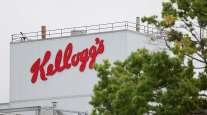UPS 2nd-Qtr. Earnings Fall 49%, but 3 Main Units Stay Profitable
This story appears in the July 27 print edition of Transport Topics.
Second-quarter net income at UPS Inc. fell 49%, compared with a year earlier, but all three main divisions remained profitable despite the ongoing recession and a 16.7% decline in global revenue.
UPS, Atlanta, the largest company on the Transport Topics Top 100 list of for-hire carriers, said July 23 it earned $445 million, or 44 cents a share, on quarterly revenue of $10.83 billion. During the same three months last year, it earned $873 million, or 85 cents a share, on revenue of $13 billion.
Chairman and CEO Scott Davis and Chief Financial Officer Kurt Kuehn said during a July 23 conference call that while business is worse than a year ago, contraction appears to have stopped.
However, there is also no evidence of growth yet.
“Whether we’ve hit bottom is not the main issue now,” Davis said. “The question is: How long do we remain here, and what sort of recovery will we have?”
Davis told a stock analyst he disagreed with the assumption that the current poor environment is “the new normal,” and he predicted that the economy — and UPS volumes — will resume growth. For the present, though, Davis said his managers will proceed with the assumption that the economy will remain as is until “there are definitive signs of improvement.”
Kuehn said the flat economy is not unique to the United States.
“There was no growth in any region of the world,” he said of the company’s second-quarter results.
In the company’s domestic package line, quarterly air volume — for next-day and deferred combined — held up best, remaining flat at 2.06 million parcels a day. However, Kuehn said that was because DHL Express exited the domestic market earlier this year.
Domestic ground volume de-clined by 5.4% to 10.4 million packages a day from 11 million in the 2008 second quarter. Kuehn described pricing for parcel delivery as “challenging, but rational.”
He said UPS Freight, the company’s less-than-truckload carrier, is “back to breaking even” in terms of profitability. UPS does not report profitability for the former Overnite Transportation Co., but its quarterly LTL revenue did decline to $471 million from $564 million in the year-ago quarter.
Kuehn was asked about the U.S. automobile industry and which part of UPS would benefit most if General Motors and Chrysler were to recover, now they have exited bankruptcy. He said he thought UPS Freight would be the segment to garner the greatest benefit if such a recovery were to happen.
Kuehn said UPS has been working on improving its LTL operations by investing in technology for the carrier and instructing the parcel division sales force to cross-sell LTL transportation to package customers.
Trucking technology analyst Sandeep Kar follows UPS for growth consulting firm Frost & Sullivan and said he was most interested in UPS’ vehicle investment habits.
“They cannot function without a lean cost structure. They’re aware that diesel can go back toward $5 a gallon, and they’re serious about it,” Kar said.
“They’re converting a lot of their vehicles to hybrids,” Kar continued. “There’s more cost now, but the idea is to enhance fuel efficiency and expand profit margins when there is a recovery. It’s a key strategy for them.”
Davis said in his opening remarks that the company has stressed to its customers the environmental benefits of its new, fuel-efficient aircraft and the use of truck-rail intermodal transportation to curtail fuel purchasing.
Kuehn said the company is running ahead of its plan for cost reduction and expects to “come in 20% to 25% higher than our initial target.”




